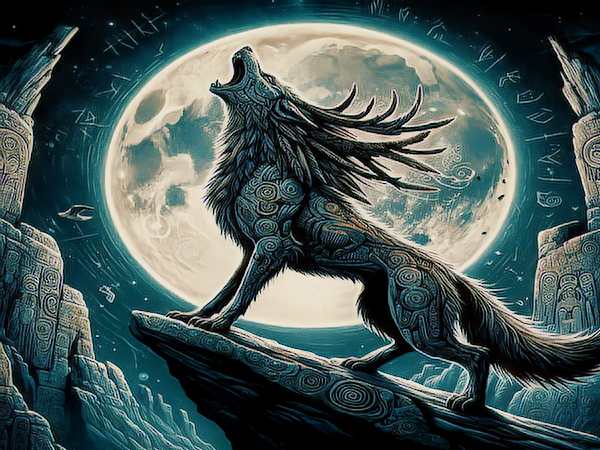In the tapestry of Native American folklore, few figures evoke as much fear and fascination as the skinwalker. This supernatural being, capable of transforming into any animal, is a central figure in Navajo legends and represents a profound aspect of their spiritual and cultural heritage.
The Mystique of the Skinwalker
Known among the Navajo as the Yeenaaldlooshii, meaning “with it, he goes on all fours,” the skinwalker is one of the most potent and enigmatic figures in their mythology. Unlike other Navajo witches, who are practitioners of different spiritual paths, the Yeenaaldlooshii is a specific type of witch, or ’ánt’įįhnii, with the terrifying power to shapeshift.
The transformation into a skinwalker is believed to result from breaking a significant cultural taboo. According to Navajo beliefs, an ’ánt’įįhnii gains the ability to become a Yeenaaldlooshii after committing a grave act, such as killing a close family member. This dark ritual supposedly grants the witch the sinister powers associated with skinwalking.
The Shapeshifting Powers
Skinwalkers can assume the form of various animals, including coyotes, wolves, owls, foxes, and crows. The transformation allows them to travel swiftly or escape from pursuit. In their animal form, skinwalkers might use their abilities for malevolent purposes, including using a perverted ritual song known as the “Black Mass” to curse rather than heal.
In some accounts, skinwalkers are said to have the ability to “steal” a person’s skin or body. If one locks eyes with a skinwalker, they might believe that the entity can absorb itself into their body. This supernatural power also includes the ability to read human thoughts and mimic voices, which can be used to lure victims away from safety.
The Skinwalker’s Appearance
Skinwalkers are often described as appearing naked, with only a coyote or wolf skin draped over them. However, some accounts suggest that the skinwalker might appear as a mutated version of the animal whose skin they are using. In this context, the skin is not merely a disguise but a critical part of their identity.
The use of animal skins is a significant aspect of skinwalker lore. Hides of animals like bears, coyotes, wolves, and cougars are considered taboo among the Navajo due to their association with skinwalkers. Conversely, sheepskin and buckskin are used ceremonially but are not related to the dark practices of skinwalking.
Encounters and Fears
Many Navajo recount encounters with skinwalkers, though discussing such experiences is often avoided, particularly at night. Reports of skinwalkers attempting to break into homes, banging on walls, or causing car accidents reflect their feared and elusive nature. Despite attempts to confront or kill them, skinwalkers often manage to escape, leading to speculation about their true identities.
There are also tales of skinwalkers leading trackers to the homes of people known to the trackers, reinforcing their reputation for trickery and deceit. In some cases, a wounded skinwalker might reveal themselves by leaving behind similar injuries on others, but such cases are rare and often shrouded in mystery.
Curses and Taboos
The fear of curses is deeply ingrained in Navajo culture. Skinwalkers are believed to use personal items like spit, hair, or clothing to cast curses on individuals. Consequently, many Navajo people are cautious to avoid leaving such items unattended. Hair and nail clippings are burned, and children are advised to cover their urine with dirt to prevent its use in curses.
The Origins and Evolution of the Legend
According to Navajo legend, the skinwalker’s powers were originally a divine gift intended for use against enemies. Over time, however, the misuse of this power led to its reclamation by the divine. Some people relinquished their powers, while others hid their knowledge, passing it on in secret.
This transformation from a sacred gift to a source of fear highlights the complex relationship between the Navajo people and the concept of skinwalking. The legend underscores the broader themes of power, taboo, and the consequences of transgression in Navajo spirituality.
Conclusion
The Navajo skinwalker represents a profound and unsettling element of Native American folklore. As a shapeshifter with the ability to traverse both human and animal forms, the Yeenaaldlooshii embodies the fears and mysteries of Navajo spirituality. Whether as a supernatural being or a cultural symbol, the skinwalker continues to fascinate and terrify, reflecting the deep-seated beliefs and traditions of the Navajo people.

